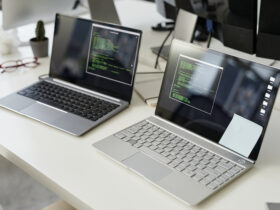Well-lighting your interior is just as important as arranging and decorating it. These elements contribute to the general atmosphere of a room, allow certain details to be highlighted and guarantee comfort in case of workspaces. To avoid some mistakes and make lights a stylish addition to your home, there are some elementary rules that should be known.
How to properly light the kitchen? What lighting to choose in the bathroom? How to create a warm atmosphere in your living room? What type of light bulbs to use? Let’s find out now!

The different types of lighting
Before adding light into your interior, it is important to distinguish between the different types of light.
Firstly, there is general lighting. It implies lighting a room as a whole by means of suspension or ceiling lights. This represents the one element that you turn on first and that brings the room out of the dark. It is usually complemented by smaller lighting, which is designed to give the space a rather cozy, contemporary, soothing atmosphere.
Wall lights, floor lamps, table lamps, – fixed or portable – contribute to its effect. The choice of the color, as well as the luminous flux is very important here.
Mixed lighting, on the other hand, combines direct and indirect lighting. It focuses on providing maximum comfort and safety in order to carry out specific activities: working, cooking, etc.
Generally, there is much talk of cold light versus warm light. The idea is that it is as close as possible to natural light. We, therefore, recommend warm lights in the living rooms to create warmer atmospheres.
Choose the right lighting according to the rooms
As you might already understand, the choice of lighting depends on of the rooms in which it is placed. The needs, as well as the desired atmosphere, guide the choice of rather direct, indirect, mixed or functional lighting.
In the living room, it is not uncommon to see a pendant light right in the middle of the ceiling – but this is never sufficient, especially if the room is big. Think about visual comfort and multiply the ambient lighting sparingly.
Thus, in addition to a suspension, place sconces to the walls, install a floor lamp and contribute to the general lighting while bringing a decorative touch to the atmosphere. Moreover, you can place a table lamp and create complementary points of light here and there.
In a dining room, the lighting is usually placed above the table. It thus dresses the space and sets up a special atmosphere. Ensure that the light is not too strong and at the right height. The height of the light is important because it especially defines the shaded or less illuminated areas.
In the kitchen, the choice of lighting is not to be made lightly. You prepare meals there, so directional lighting is essential. To avoid shadows, the lighting should be in line with the worktop but not behind you.
Wide, overhead lighting provides the light needed for cooking. In terms of the atmosphere, a pendant light on a variator is ideal. The choice of a suspension would allow creating a distributed and warm lighting. The addition of a light point depends on the configuration of the kitchen, but directional lighting remains essential.
The light in the bathroom also requires special care. As this is the place where you often look at yourself, you need a light point on the worktop, as well as a wall lamp, which would bring light to the face.
In the bedroom, it is common to place a light fixture in the center of the room. It has a rather decorative function because, in this space, one especially needs lighting on either side of the bed. We, therefore, advise against suspensions, especially in the center of the room, and favor the addition of light points here and there, especially if the room is large, to have sufficient lighting.
Entrance lighting is more general, and, depending on the size of the space, the fixture can be very decorative. If there is a particular function attributed to this room, it is advisable to add an additional light point or some sconces to see it well enough.

What mistakes should be avoided in the design of interior lighting?
The main mistake is adding too much. The lighting is the centerpiece of the atmosphere, so there is no need to multiply it. In this regard, do not overlight the space, even if the bulbs are low power.
If you decide to install many small lights, it is better to choose them in low luminance, in order to avoid headaches. Another common mistake-absolutely wanting to place a light that you like but which will not necessarily suit the room. A favorite piece does not always have its place where you imagine it, so be sure to study the final effect.
Use lighting to highlight or, on the contrary, to hide elements of the decor
In addition to illuminating and defining the atmosphere of a room, lighting also makes it possible to highlight elements of the decor. Whether this implies objects – works of art, furniture (which you can find at nyfurnitureoutlets.com) – or surfaces – walls, materials -, each should have its own special lighting.
Moreover, by highlighting a place, a space, or an object, we reduce the impact of what is intended to be in the shadows. It is thus possible to divert attention from an element that one wishes to hide (a defect, for example) by drawing the gaze to something else.
How to reduce costs if you multiply the lighting in your interior?
Lighting is a major expense in a house or apartment. The importance it assumes and the multiplication of light sources can quickly increase the bill. To minimize the financial impact, prioritize the types of lighting: not all lights should be the centerpieces of the decoration, one is enough. They can be discreet and sober.
Many brands today offer great products at affordable prices. However, care should be taken with each purchase. In the market, there isn’t always a middle ground [in terms of quality]. High-end lighting, however, can last longer, with the same devices and the same bulbs. This is a big advantage, especially in terms of consumption (LED is preferred).
Therefore, think about the investment over time. Brands often offer the choice between integrated LED lights and products where it is up to the consumer to add a LED bulb. The latter is often less expensive and can therefore be useful to balance the budget.
Remember to be careful with the bulb – do not put a low-end LED bulb on a high-end luminaire.
All in all, lighting is successfully added to the interior when…
…When it is more technical, attributed to a specific function – concealed or even invisible, to which it is advisable to add decorative pieces such as suspensions, wall lights, floor lamps. The beauty of light is visible via the right dosage of its power, the choice of its color, type and heat, according to the desired atmosphere, and via intelligent placement, so as to guarantee working comfort and security. The type of bulb, as you have already understood, is also important.
Shape, light, transparency or opalescence of the glass greatly contribute to the desired lighting effect. Likewise, the choice of finishes for the luminaire: metallic or natural fibers filter the light, while lampshades made of fabric or paper suspensions convey the light in a diffused way.
What about you? Have you already switched to LED lighting in your glowing home?













Leave a Reply